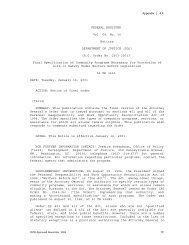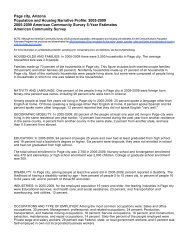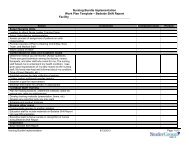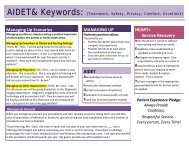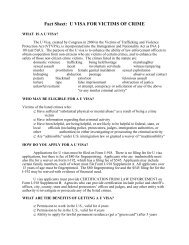4. Evaluating CHA Services
4. Evaluating CHA Services
4. Evaluating CHA Services
- No tags were found...
Create successful ePaper yourself
Turn your PDF publications into a flip-book with our unique Google optimized e-Paper software.
Summary of the National Community Health Advisor Study, 1998<br />
<br />
<br />
<br />
Evaluation paperwork is perceived to take time away from time spent with clients. Programs<br />
frequently use forms as data collection instruments and <strong>CHA</strong>s perceive the paperwork required as a<br />
significant barrier to doing their work. While forms can capture valuable information, many<br />
programs are funded by multiple funders, each of which imposes different reporting requirements.<br />
Also, many of the effects that <strong>CHA</strong> services have on clients and community cannot be captured by<br />
quantitative instruments.<br />
Some evaluation measures can violate client confidentiality and are perceived as invasive. <strong>CHA</strong>s<br />
felt strongly that privacy issues could be a significant barrier to evaluation. A <strong>CHA</strong> who worked with<br />
juveniles indicated that he did not document certain client information because it would adversely<br />
affect the youths if presented in court. Instead, he kept that information “in my head.”<br />
There is limited opportunity to document services that are beyond the scope of the program. One<br />
<strong>CHA</strong> put it this way: “I could think of one thing that I did with a very young mother that had no life<br />
skills. I took her to the motor vehicle department…I got her an ID… I took her to a bank…things<br />
like that...but you don’t always record it...and sometimes you do [things] without realizing how<br />
important an effect you’re having on that person’s life.”<br />
Overcoming Barriers to Evaluation of <strong>CHA</strong> Programs<br />
<strong>CHA</strong>s and program staff shared several ideas for alleviating evaluation barriers. In summary,<br />
frequent ideas were as follows:<br />
<br />
<br />
<br />
<br />
<br />
<br />
<br />
Program goals and objectives should be clear and measurable.<br />
Interviewers who gather data for the evaluation component of programs should be matched to the<br />
experience and culture of the target population.<br />
Administrators should ensure that <strong>CHA</strong>s have opportunities for evaluation education.<br />
Non-<strong>CHA</strong> staff should engage in two-way communication with <strong>CHA</strong>s about programactivties, goals,<br />
and evaluation. <strong>CHA</strong>s should be involved in planning all aspects of the program including evaluation.<br />
Short and intermediate outcomes should be measured.<br />
Outside evaluators could be employed to corroborate program self-evaluation. Methods to document<br />
expenses (costs) and savings (benefits) associated with delivering <strong>CHA</strong> services should be<br />
developed.<br />
Innovative qualitative data collection methods should be developed.<br />
A strong theme among <strong>CHA</strong>s was that current evaluation methods and practices are inadequate to truly<br />
capture the real work and impact of what they do. One said, “It’s almost as if they don’t care about the<br />
quality of care, just the quantity of care. ... I understand the need to account for the number of visits or<br />
classes, but that doesn’t factor in the impact we have on the people.”<br />
20



